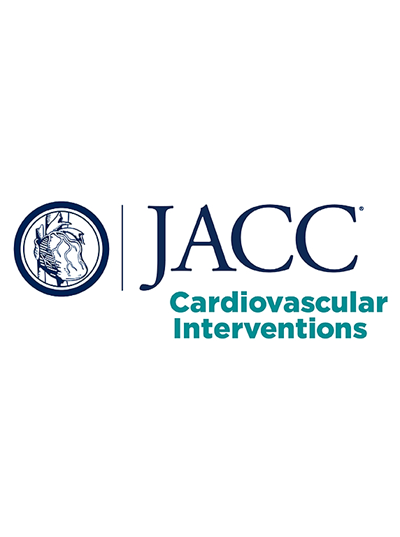Impact of Optimal Procedural Result After Transcatheter Edge-to-Edge Tricuspid Valve Repair
IF 11.7
1区 医学
Q1 CARDIAC & CARDIOVASCULAR SYSTEMS
引用次数: 0
Abstract
Background
Procedural success following tricuspid transcatheter edge-to-edge repair (TEER) has been defined variably over time; however, the consequences of achieving a tricuspid regurgitation (TR) grade of 0/1+ are still unclear.
Objectives
This study aimed to assess the predictors and prognostic impact of achieving TR 0/1+ after TEER and its role in clinical events.
Methods
This multicenter registry included patients undergoing tricuspid TEER in 15 Spanish centers from June 2020 and May 2023. Patients were categorized into the following groups based on the TR grade after procedure: optimal (0/1+), acceptable (2+), and not acceptable (≥3+). The primary endpoint was the 1-year composite of all-cause death, heart failure hospitalization, and tricuspid reintervention. Secondary endpoints included each component of the primary endpoint assessed separately, NYHA functional class, and TR grade at follow-up.
Results
Among 280 enrolled patients, 120 (42.9%) had residual TR 0/1+, 111 (39.6%) had residual TR 2+, and 49 (17.5%) had residual TR ≥3+. Patients with TR 0/1+ experienced lower rates of the primary endpoint (13% vs 20% vs 31%; log-rank P = 0.036). Residual TR ≥3+ was an independent predictor of primary endpoint (HR: 2.277; P = 0.044). Higher rates of NYHA functional class I or II and sustained TR reduction were seen in the TR 0/1+ group (P < 0.001 for both). A small coaptation gap and absence of septal leaflet tethering were independent predictors of achieving TR 0/1+.
Conclusions
An optimal procedural result after TEER might be associated with improved outcomes. TR coaptation gap and leaflet restriction may aid in assessing suitability for TEER.
经导管边对边三尖瓣修复术后最佳手术结果的影响:TRI-SPA 登记的结果。
背景:三尖瓣经导管边缘到边缘修补术(TEER)后的手术成功率随着时间的推移有不同的定义;然而,三尖瓣反流(TR)等级达到0/1+的后果仍不清楚:本研究旨在评估TEER术后达到TR 0/1+的预测因素和预后影响及其在临床事件中的作用:这项多中心登记包括 2020 年 6 月至 2023 年 5 月期间在 15 个西班牙中心接受三尖瓣 TEER 的患者。根据术后的 TR 分级将患者分为以下几组:最佳(0/1+)、可接受(2+)和不可接受(≥3+)。主要终点是全因死亡、心力衰竭住院和三尖瓣再介入术的 1 年复合终点。次要终点包括分别评估的主要终点的每个组成部分、NYHA功能分级和随访时的TR分级:在280名入选患者中,120人(42.9%)的残余TR为0/1+,111人(39.6%)的残余TR为2+,49人(17.5%)的残余TR≥3+。TR 0/1+ 患者的主要终点发生率较低(13% vs 20% vs 31%; log-rank P = 0.036)。残余 TR≥3+ 是主要终点的独立预测因素(HR:2.277;P = 0.044)。在 TR 0/1+ 组中,NYHA 功能分级 I 级或 II 级的比例更高,TR 持续降低的比例也更高(两者的 P < 0.001)。吻合间隙小和没有室间隔小叶系带是达到TR 0/1+的独立预测因素:结论:TEER术后的最佳手术结果可能与预后的改善有关。TR 合瓣间隙和瓣叶限制可能有助于评估是否适合 TEER。
本文章由计算机程序翻译,如有差异,请以英文原文为准。
求助全文
约1分钟内获得全文
求助全文
来源期刊

JACC. Cardiovascular interventions
CARDIAC & CARDIOVASCULAR SYSTEMS-
CiteScore
11.60
自引率
8.80%
发文量
756
审稿时长
4-8 weeks
期刊介绍:
JACC: Cardiovascular Interventions is a specialist journal launched by the Journal of the American College of Cardiology (JACC). It covers the entire field of interventional cardiovascular medicine, including cardiac, peripheral, and cerebrovascular interventions. The journal publishes studies that will impact the practice of interventional cardiovascular medicine, including clinical trials, experimental studies, and in-depth discussions by respected experts. To enhance visual understanding, the journal is published both in print and electronically, utilizing the latest technologies.
 求助内容:
求助内容: 应助结果提醒方式:
应助结果提醒方式:


